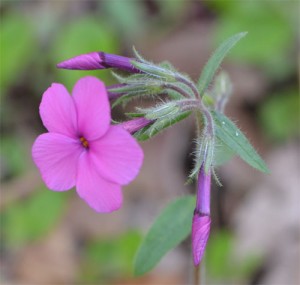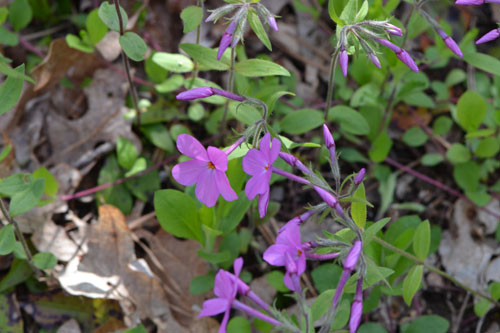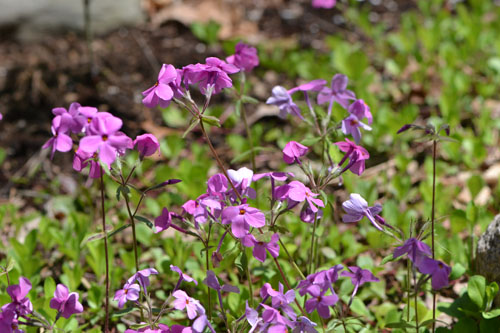 This is a very successful groundcover in my woodland garden. I started off with two plants two years ago, and they have gradually covered an area of 6 by 6 feet. The pink flowers reach up to the sky on top of 5 to 6 inch stems, so there is some elevation and structure to this plant. The flowers are showy and will last about a month. After that, creeping phlox will continue to expand its range by sending out creeping stems. These stems develop roots and the plant creates a new base to grow from. What I like about this plant is that it mixes well with neighbors – I can have plants and ferns in the middle of a field of phlox stolonifera without having to worry that those plants will be choked off or killed by an ever denser mass of creeping phlox. The plant is best propagaged by dividing the rhizomes, but you can also take stem cuttings.
This is a very successful groundcover in my woodland garden. I started off with two plants two years ago, and they have gradually covered an area of 6 by 6 feet. The pink flowers reach up to the sky on top of 5 to 6 inch stems, so there is some elevation and structure to this plant. The flowers are showy and will last about a month. After that, creeping phlox will continue to expand its range by sending out creeping stems. These stems develop roots and the plant creates a new base to grow from. What I like about this plant is that it mixes well with neighbors – I can have plants and ferns in the middle of a field of phlox stolonifera without having to worry that those plants will be choked off or killed by an ever denser mass of creeping phlox. The plant is best propagaged by dividing the rhizomes, but you can also take stem cuttings.

Phlox stolonifera is native to the eastern U.S. and Canada, from Quebec down to Georgia. It is not natively present in the Canadian maritimes and New England, however. Still, the sheer color magic of this plant makes it a must-have for the dappled sun areas of your garden.

creeping phlox May 20 2011
| Scientific name: | Phlox stolonifera |
| Common name: | creeping phlox |
| Other name: | N/A |
| Bloom time: | mid spring |
| Color: | pink, violet, lavender |
| Light requirements: | light shade to full shade |
| Zone: | 4 to 8 |
| Soil: | acidic to mildly alkaline |
| Water: | average water needs |
| Origin: | eastern North America, not New England |
Leave a Reply